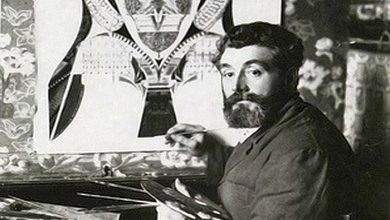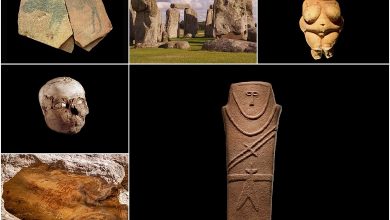Rise and fall of Marie de’ Medici – from Queen of France to beggar

France was ripped apart by theological differences when Marie de’ Medici married Henry IV in 1600. Marie and Henry’s marriage was one of the royal families’ most miserable unions. As she saw her husband strive to take control of the nation, she was thirsty for power. She awaited the day when she would be able to strike and govern on her own.
After ten years of marriage, it occurred. Marie was given the title of Queen of France. Henry was slain by a zealous priest the next day, and Marie de’ Medici became the sole queen.
She controlled France with an iron fist and amassed a large number of adversaries. She was not a blood queen like previous European queens. Her situation became even more perilous as a result of this condition. When her son reached adulthood, she began a power battle with him for the kingdom. She thought she’d won a lot of times, but in the end, all of her endeavors were bound to fail.
Marie de’ Medici’s reign is considered one of the most important times in European history. She finished her days in poverty, reliant on the charity of the artist Peter Paul Rubens, and eternally banished by her own son, having lost authority.
Henry IV, the King of France
Henry IV married Marie de’ Medici after his first marriage to Marguerite de Valois was dissolved in 1599. The wedding took place in Florence and had a unique appearance. As king, Henry was unable to leave the realm, and Maria was unable to leave Florence without being married, therefore the newlyweds were unable to attend the ceremony. By proxy, the marriage was consummated.
Originally, Henry planned to marry Gabrielle d’estreux, his long-time lover. In 1599, the couple decided to marry on Easter Sunday. However, all dreams were destroyed when Gabrielle became unwell and died abruptly in the fifth month of her pregnancy, giving birth to a stillborn child.
The king was in need of an heir. The Medici family was well-known for their progeny. Maria was also given a sizable dowry of 600,000 crowns. That was an excellent argument as well.
Marie’s descendants became the next generation of European monarchs
Marie stepped into the role of the king’s wife with ease. In 1601, she gave birth to Louis XIII, the long-awaited successor to the kingdom. Louis was a sickly youngster who suffered from a variety of mental and physical problems that concerned physicians. Many people believed he wouldn’t survive long enough to inherit the crown. On the other hand, Marie made certain that there were successors in reserve.
Within ten years, she gave birth to six children. Five of them survived to adulthood. This is a very good statistic for that time.
Her eldest daughter became the Queen of Spain, the second – the Duchess of Savoy, and the youngest Henrietta Marie married Charles I and became Queen of England. Meanwhile, her favorite second son, Gaston, lived at the French court, sometimes causing problems for his older brother. On occasion, he instigated rebellions against his brother, attempting to topple him and grab the throne.
Henry’s habits were unaffected by his marriage. After marriage, he continued to have mistresses and live with them as if nothing had occurred. The official favorite has been named Henrietta d’Entragues. Marie was enraged, but she couldn’t do anything about it. Many of the king’s mistresses gave birth to his offspring, who were raised alongside Marie and Henry’s legitimate children.
The king, for his part, treated the queen’s Italian entourage with contempt. Concino Concini, an adventurer who Maria favored, was particularly irritating. She handed him the amount of money he requested.
Maria gained control after the assassination of her husband
Henry was continually trying to find a middle ground between the opposing religious factions. Fanatics on both sides despised him. He survived more than 20 assassination attempts before being assassinated on May 14, 1610, by a fanatical Catholic.
After being stabbed twice, Henry died unexpectedly. Louis, his younger son, was crowned king, and Marie was appointed regent. Many academics believe that the king’s death was not an accident at all. Maria had been crowned the day before, following ten years of marriage. She would not have been able to reign without this ritual.
Louis deposed his mother’s government and assassinated her favorite figures
Marie could only remain regent until her son became thirteen years old. But she clung to power for much longer, attempting to keep Louis from reigning and humiliating him in public in every way she could. Medici continued to devote attention to her Italian friends Concino Concini and Leonore Galigai at the same time.
The title of Marquis d’Ankra was bestowed to Concini. He became to be her most trusted advisor. Marie established a pro-Spanish strategy with his assistance. Her mother was a member of the Habsburg dynasty, which had formed an alliance with the imperial family. The situation progressed to the point that she married her son to the Spanish Infanta Anna of Austria.
Armand Jean du Plessis, better known as Cardinal Richelieu, was drawn closer to the supervision of public affairs by Marie de’ Medici. He was her confidant.
The queen lived a life of luxury and depleted the coffers. Trust in the royal authority was eroding, aristocrats were becoming more dissatisfied, and political unrest erupted at court and across France. Marie’s popularity was rapidly dwindling.
Her son was irritated by her mother’s actions. He realized she was occupying her position unlawfully and was waiting for the proper opportunity to intervene. It arrived on April 24, 1617, early in the morning. A palace coup was staged by Louis XIII and his close friend Charles de Luynes. Concini was assassinated, and his wife was beheaded and burnt for witchcraft. Before being deported to the Castle of Blois, Marie de’ Medici was held under house arrest.
Marie staged a daring escape
On the other hand, the queen was not one of those who stood by and watched while her country was snatched from her. She planned her escape from the fortress of Blois with the assistance of many loyal nobles. It happened on the night of February 21-22, 1619, two years after his captivity.
The queen descended a rope ladder from a high tower with the assistance of troops and servants. When she arrived on the ground, the castle guards mistook her for a girl of simple virtue and inquired how much an evening with her would cost. Marie managed a good-natured chuckle.
Despite this, the escape was on the edge of becoming a disaster. The queen had forgotten about the jewelry box she planned to sell in order to raise funds for the soldiers fighting her son. Without them, the battle may have finished before it ever began. She demanded that the carriage be turned around, returned, and the riches be taken. Despite this, she died at the Rubens’ mansion in Cologne, alone and impoverished. To get the latest stories, install our app here




